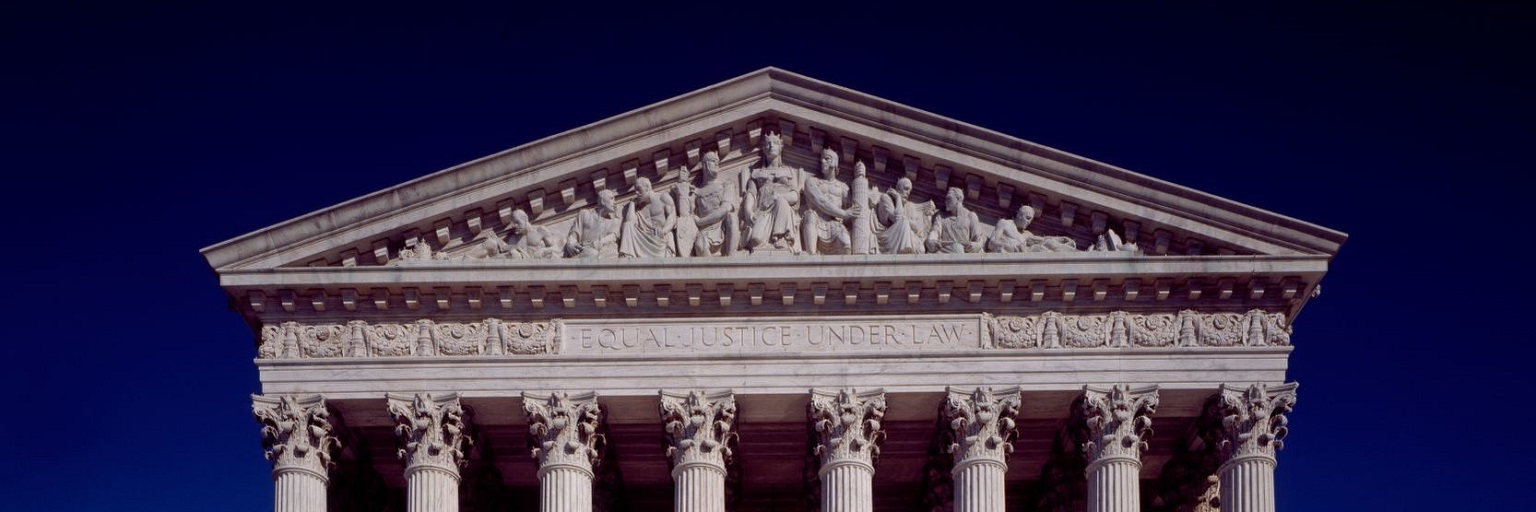Article III of the Constitution
Article III describes the judicial power of the United States as “vested in one supreme Court” and gives Congress the power to establish inferior federal courts, but both the Supreme Court judges and these inferior court judges have life appointments “during good Behavior” and receive a steady income.
- Section 2 outlines the jurisdiction and types of cases the federal courts can hear including those arising from the Constitution and Treaties, cases involving Ambassadors, and public Ministers and Consuls, and controversies involving citizens of different states or citizens with different states. The Supreme Court has original jurisdiction over such cases involving a state and an Ambassador or two states, but in all other cases, it has appellate jurisdiction, unless Congress changes it by law.
- All trials of crimes should be jury trials, except for Impeachment and held in the state where the crime was committed, unless it was committed in a territory, and then the location would be determined by federal law.
- Section 3 defines treason against the United States: “levying War against them, or in adhering to their Enemies, giving them Aid and Comfort.” No person should be convicted unless having confessed in open court or unless two witnesses testify as to the “same overt Act.” Congress can determine punishment for Treason, but only applies to the convicted, not their family, and not to extend after the convict’s lifetime.
Judicial Review
Judicial Review is not within the text of the Constitution, instead it was established by the Supreme Court in Marbury v. Madison (1803). The premise is that the Judicial branch serves as a check on the Legislative branch and Executive branch through its role as the interpreter of the law and with the authority to review the actions by the other branches and ensure that those actions are constitutional. The Supreme Court does not have an army and has no enforcement power once the Court hands down a decision. Thus, the Judicial branch is wholly dependent on the respect of their authority and judicial review, as well as the adherence to the rule of law by the other two branches of government and by the people.
Marbury v. Madison (1803)
The Supreme Court held that a provision in the Judiciary Act was unconstitutional, extending original jurisdiction beyond what is stated in the Constitution. Chief Justice John Marshall, wrote, “It is emphatically the province and duty of the judicial department to say what the law is. Those who apply the rule to particular cases must, of necessity, expound and interpret the rule. If two laws conflict with each other, the Court must decide on the operation of each.” This established judicial review as the duty of the Judiciary. Learn More
Rasul v. Bush (2004)
The Supreme Court held that detainees held on a US Naval Base in Guantanamo Bay, Cuba could bring a legal challenge to their detention by filing a writ of habeas corpus and that the federal courts had jurisdiction to hear those challenges and review their detention. Learn More
- Constitution Annotated, produced by the Congressional Research Service
- Judicial Branch, an annotation posted by the National Constitution Center
- “About the Court” posed by the Supreme Court of the United States
Marbury v. Madison, on CSPAN Landmark Cases, includes multimedia resources and discussion of the case.
Habeas Corpus: The Guantanamo Cases from the Annenberg Classroom. This video discusses habeas corpus and its protection against unlawful, arbitrary detention through a focus on separation of powers and judicial review of four major Guantanamo Bay cases after the 9/11 attacks, including Rasul v. Bush (2004). Here is a handout for teachers, including a lesson plan, to use with the video.

